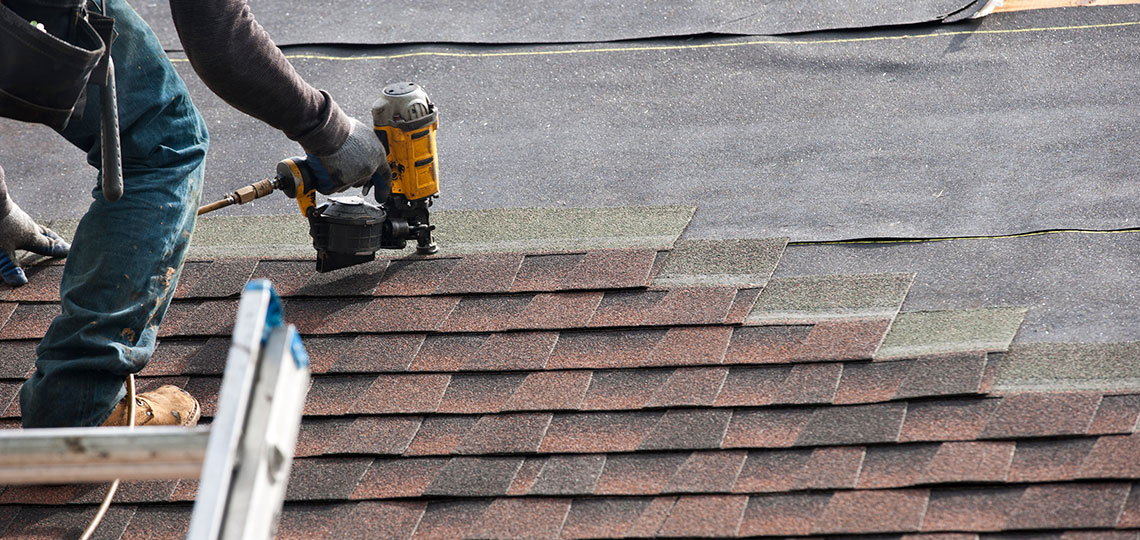Examining the Providers Provided by Roofing Companies in Gainesville Florida
Examining the Providers Provided by Roofing Companies in Gainesville Florida
Blog Article
Best Practices for Ensuring Correct Roofing Air Flow
Guaranteeing proper roofing ventilation is critical for the long life and effectiveness of a roof. A well balanced intake and exhaust vent ratio, generally 1:300, plays a pivotal role, with consumption vents ideally positioned at the lower edge of the roofing for cool air entrance and exhaust vents at the height for cozy air departure. Routine examinations to recognize blockages and preserve clear air movement are paramount. Keeping insulation away from vents is vital to stop air flow limitation. Understanding these foundational elements sets the phase for more thorough understandings into installment and maintenance techniques that can dramatically boost your roofing system's efficiency.
Understand Air Flow Basics
Correctly comprehending ventilation essentials is vital for making certain the durability and performance of roofing systems. Reliable air flow minimizes dampness accumulation and temperature extremes in the attic room, both of which can bring about significant architectural damages in time. A well-ventilated roofing system aids in protecting against usual issues such as mold growth, timber rot, and ice dams, which can compromise the stability of the roof materials and the underlying frameworks.
The key objective of ventilation is to facilitate the activity of air, permitting a consistent exchange in between the indoor and outdoor settings. This equilibrium is achieved with a combination of intake and exhaust vents that collaborate to preserve optimal air flow. Consumption vents, commonly situated along the soffits or eaves, allow fresh air to enter the attic area, while exhaust vents, commonly situated at or near the roofing ridge, enable warm, humid air to run away.
Secret aspects affecting the effectiveness of roof covering ventilation include proper positioning, ample sizing, and making sure that both intake and exhaust vents are unhampered. Normal examination and upkeep are vital to determine potential clogs, damages, or ineffectiveness in the ventilation system, thereby securing the roof covering's efficiency and toughness.
Types of Roofing Vents
Roofing system vents play an essential role in keeping reliable attic ventilation and, by extension, the general health of the roof system. Different kinds of roofing system vents are available, each with special advantages tailored to specific roof covering demands.

Soffit vents are installed under the eaves and job in tandem with roofing vents to guarantee a well balanced intake and exhaust system. By enabling cooler air to go into from below, soffit vents help with the expulsion of warm air with upper vents. Gable vents, located on the outside walls of the attic room, deal an additional reliable service, particularly in homes with saddleback roofs.
Analyze Your Current Ventilation

Next, take into consideration the age and problem of your roof covering products and air flow elements. Older systems may not abide by existing building ordinance or might have degraded over time, decreasing their performance. Conduct a complete examination to recognize any signs of damage, such as corrosion, damage, or gaps that can compromise the system's performance.
Additionally, gauge the attic room temperature level and moisture degrees. High temperature levels and moisture can suggest inadequate air flow.
Setup Best Practices
Efficient installment of roofing air flow systems is critical for ensuring optimal efficiency and longevity. Correct installment starts with recognizing the specific ventilation needs of the building and the roof covering it covers. This involves computing the right ratio of consumption to tire vents, commonly adhering to the 1:300 regulation, which specifies one square foot of air flow for every 300 square feet of attic room flooring area.

Consumption vents must be installed at the roof's lower edge, often in the soffits, to enable amazing air redirected here to go into. Exhaust vents, on the various other hand, need to be mounted near or at the roof's height to assist in the departure of cozy, damp air.
Seal all air vent connections carefully to stop air leaks and potential water infiltration. Use high-quality products and follow producer guidelines to make certain sturdiness and effectiveness. In addition, integrating ridge vents with baffles can significantly enhance air movement performance by avoiding wind-driven rain and snow from going into the attic room.
Ultimately, specific installment of roof covering ventilation systems minimizes possible concerns such as mold and mildew development, ice dams, and architectural damage, guaranteeing the roof's stability and the structure's general wellness.
Routine Upkeep Tips
Uniformity in maintenance practices is fundamental to guaranteeing the long-lasting performance of roof covering air flow systems. Normal examinations are crucial, ideally executed biannually-- in the springtime and loss. During these evaluations, ensure that vents are devoid of particles, nests, and other obstructions that could hinder airflow. Check for any kind of indicators of wetness build-up or mold, as these can suggest inappropriate ventilation or leakages (roofing companies).
Cleaning the vents is one more important job. Use a soft brush or a vacuum cleaner to get rid of dirt and debris from intake and exhaust vents. Be careful not to harm the air vent screens or louvers during the procedure. Additionally, examine the attic area for any kind of indications of water damage, which might compromise the integrity of the roof.
Correct insulation is equally important. Make certain that attic room insulation does not block the vents, as this can badly restrict airflow. If any insulation has changed or worked out, reposition or replace it to keep an effective barrier.
Finally, change any type of damaged or missing out on components immediately. Broken vents, split tiles, or tatty flashing can all add to poor air flow and needs to be resolved immediately. Regular upkeep guarantees that the roofing air flow system works efficiently, thereby extending the lifespan of the roof itself.
Final Thought
Guaranteeing correct roofing air flow is paramount for keeping the effectiveness and sturdiness of a roofing system. Adherence to the 1:300 intake and exhaust air vent proportion, combined with the tactical positioning of vents, is necessary. Regular biannual examinations, debris cleaning, and guaranteeing insulation does not block airflow are important methods. Implementing these ideal techniques will certainly promote a well-ventilated roof, thus alleviating potential concerns associated to moisture accumulation and extreme warmth, inevitably extending the roof's life expectancy.
A well balanced intake and exhaust vent proportion, generally 1:300, plays an essential role, with intake vents preferably placed at get more the reduced side of the roofing system for great air access and exhaust vents at the peak for warm air exit. Intake vents, commonly located along the soffits useful link or eaves, permit fresh air to go into the attic room area, while exhaust vents, frequently situated at or near the roof covering ridge, allow hot, humid air to escape.
Soffit vents are mounted under the eaves and work in tandem with roof covering vents to ensure a balanced intake and exhaust system. By allowing cooler air to go into from below, soffit vents assist in the expulsion of hot air via upper vents. Adherence to the 1:300 intake and exhaust vent ratio, paired with the calculated placement of vents, is important.
Report this page